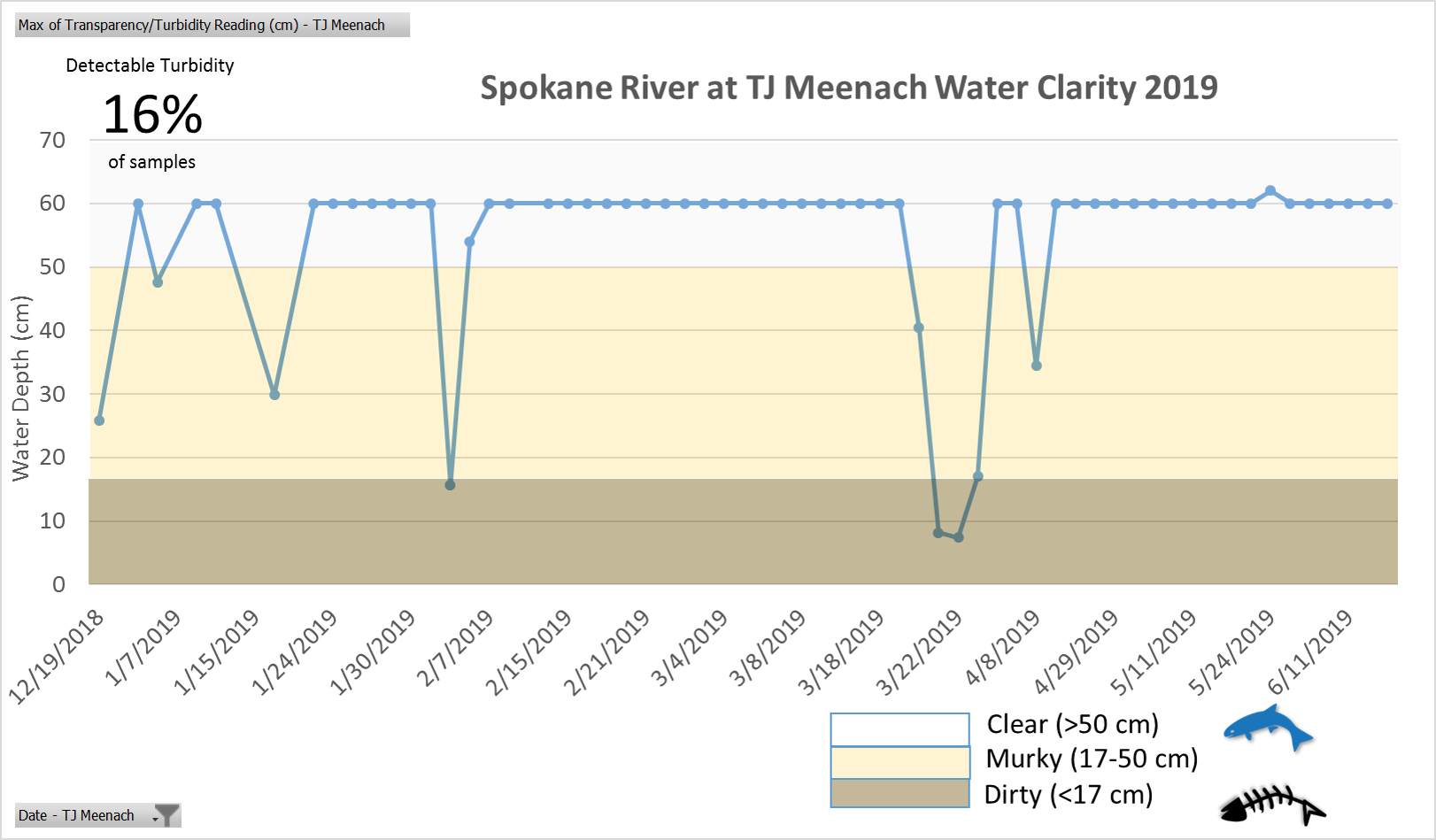When most people think of water pollution, they imagine harmful chemicals or raw sewage pouring into waterways, poisoning fish and turning the pristine water into a green, sludgy mess. However, one of the most prevalent and dangerous forms of pollution threatening the Spokane River is sediment. Sediment is simply naturally formed, fine-grained particles that wash into the river. When the amount of sediment in the water greatly exceeds the natural capacity, it can create murky conditions called turbidity that, aside from clouding the natural beauty of the river, also contributes to lower dissolved oxygen levels, increased temperature, respiratory problems in fish, and burying fish eggs. Think of it like smog or the heavy smoke that often chokes Spokane air during the summertime.
Wanting to understand more about the local dynamics of this issue, Spokane RiverKeeper conducted a half-year study between December of 2018 and June of 2019 to measure the transparency of the water at different points on the river. This study could not have taken place without the amazing and dedicated community volunteers who took the measurements for us. They used turbidity tubes to record the depth of water (in cm) in which visibility was still possible. They noted the flow of the river and weather conditions at the time of sampling to help us potentially correlate these environmental factors with turbidity. Along with data, volunteers took photos to create a pollution time lapse (shown below). Their results painted a picture of where and when sediment pollutes our waterways.
Pulses of sediment rush into the river in the winter and spring triggered by rapid snowmelt and rains. The sediment pulse starts in Hangman Creek and travels downstream through the Spokane River. As it travels, the water mixes and dilutes the sediment eventually making the water clear again. During the study period, Hangman Creek experienced noticeable turbidity 59% of the time. This harmful excess sediment was transferred to the Spokane River. At the confluence of the two rives at Riverside Cemetery, turbidity was detected 58% of the time. As the sediment flowed through the Spokane River towards TJ Meenach, turbidity was still present 16% of the time. The data collected by this study suggests that Hangman Creek is the real problem area. The Spokane River at Sandifur Bridge, which is located upstream of where Hangman Creek connects with the Spokane River, had no detectable turbidity during the entirety of the half-year study.
Hangman Creek had measurable turbidity 59% of the time. Freezing temperatures in February and March improved water clarity, while much of the winter and spring showed poor water clarity.
The pollution from Hangman Creek affected water clarity in the Spokane River at TJ Meenach Bridge about 16% of the time, with extreme events occurring during snow melt or rain on snow events.
While sediment is natural in the environment and higher levels are expected after mass snowmelts, the extent of the sediment pollution is concerning and human activities may be responsible. Increased bank erosion caused by bare riparian zones (riverbanks) and the increasing amount of impervious surfaces allow for sediment to easily runoff into our rivers instead of staying on dry land. The resulting water pollution hurts our native aquatic species like trout that need cool, clear water to hatch and survive through adulthood. As a community, it is up to us to advocate for best management practices in order to minimize sediment pollution in our rivers.




